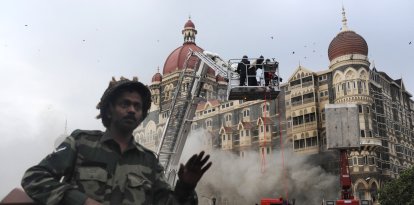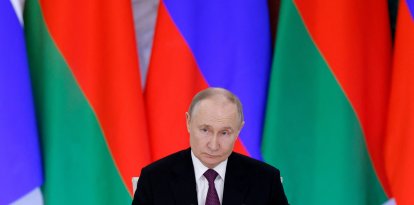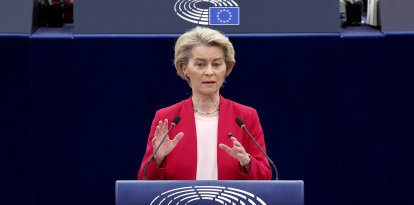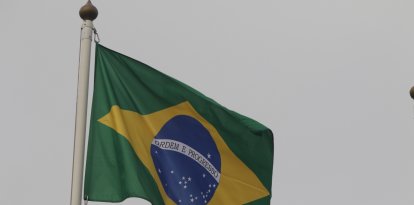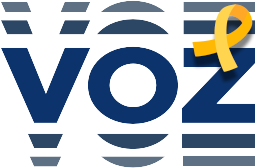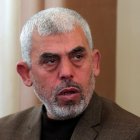Hezbollah in Latin America: A silent threat to regional and US security
A document details how the Iranian-backed terrorist group has diversified its operations in the region since the 1990s, combining fundraising activities with attempts to establish operational capabilities to carry out attacks.
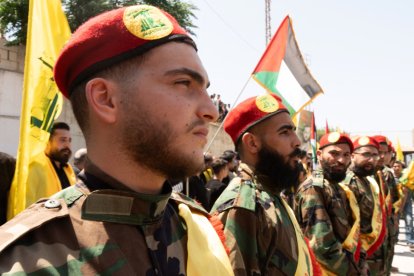
Hezbollah terrorists.
A recent report by Marzia Giambertoni of RAND Corporation, an organization composed of a group of academics with expertise in policy analysis and formulation, highlights a growing but little-addressed concern: the evolving presence of the Lebanese terrorist group Hezbollah in Latin America and its implications for U.S. national security and regional stability.
Entitled “Hezbollah Networks in Latin America: Possible Implications for U.S. Policy and Research,” the paper details how this radical Shi'ite organization, founded in 1982 and backed primarily by Iran, has diversified its operations in the region since the 1990s, combining fundraising activities with attempts to establish violent operational capabilities.
A multifaceted network
Hezbollah, known for its role as a political party, social movement and terrorist group, has found Latin America to be fertile ground for expanding its networks. According to the report, its presence is motivated primarily by the need to finance its activities in the Mediterranean Levant in the Middle East, although it has also shown a capacity to attack Israeli and U.S. interests in the region. Documented illicit activities include narco-trafficking, weapons and cigarette smuggling, illegal mining, identity theft and money laundering, all carried out with the support of networks within the Lebanese diaspora.
Emblematic cases include the 2008 arrest of Chekri Harb in Colombia, linked to a cocaine smuggling ring that paid a 12% “tax” to Hezbollah, and the money laundering operation of Ayman Joumaa, a Colombian-Lebanese national linked to drug trafficking. According to the U.S. Treasury Department, he conducts illicit activities in the Americas, the Middle East, Europe and Africa, and has ties to Hezbollah and Mexican cartel Los Zetas.
Joumaa moved hundreds of millions of dollars through used car sales and drug trafficking. Although Iran remains Hezbollah's main sponsor, covering 70-80% of its finances, these criminal activities in Latin America represent a significant supplementary source.
Historical attacks and current threats
Hezbollah's history in the region is marked by devastating attacks. In 1992, the organization perpetrated an attack on the Israeli embassy in Buenos Aires, Argentina, leaving 29 dead and more than 200 wounded. Two years later, it carried out a terrorist attack against the Asociación Mutual Israelita Argentina (AMIA) in the same city that killed 85 people, making it the deadliest attack in the history of the South American country.
More recently, in November 2023, Brazilian authorities dismantled a Hezbollah cell planning attacks against Jewish targets, evidence that the group maintains violent intentions.
The report notes that while Hezbollah appears to have reduced mass attacks like those of the 1980s and 1990s, it continues to engage in surveillance and logistical activities. In 2014, an operative was arrested in Peru for scouting potential targets, and in 2016, Bolivia seized tons of explosives from a warehouse linked to the terrorist group. These actions suggest that Hezbollah seeks to maintain latent operational capabilities in the region, ready to activate if circumstances require.
Key operational centers: the Triple Border Area and Venezuela
Two areas stand out as key hubs for Hezbollah's operations in Latin America: the Triple Border Area (TBA, for short), located between Argentina, Brazil and Paraguay, and Venezuela. The TBA, with a large Lebanese-Muslim population and a lax border control environment, has been a focal point for illicit activities and was the planning site for the Buenos Aires bombings in the 1990s. However, the lack of recent data makes it difficult to assess its current role.
For its part, Venezuela has become a strategic stronghold under the Chavez and Maduro regimes. The report details how the Venezuelan government, a close ally of Iran, has facilitated Hezbollah's operations, including drug trafficking and money laundering, with figures such as former deputy Adel El Zabayar and businessman Fawzi Kan'an, who are implicated in these networks.
The island of Margarita emerges as a possible paramilitary training center, while the state airline Conviasa has allegedly transported illegal operatives and materials.
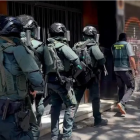
World
Spain: three people arrested in Barcelona in an anti-terrorist operation against Hezbollah
Carlos Dominguez
Iran's role and lack of attention
Iran plays a crucial role in this web, using both overt and covert strategies to expand its influence in the region. From the distribution of the biography of Iranian supreme leader Ali Khamenei to the HispanTV television channel, Tehran seeks to promote its ideology and support Hezbollah. However, the report warns that public and academic attention to these activities has waned, leaving a knowledge gap that hinders effective responses.
In the U.S., the last public congressional hearing on Hezbollah in the Western Hemisphere dates from 2015, and the most recent Congressional Research Service report on terrorism in Latin America is from 2016. This lack of up-to-date analysis contrasts with the group's increasing volatility following the death of its leader Hassan Nasrallah and his presumed successor Hashem Safieddine in Israeli attacks in 2024, which could lead Hezbollah to intensify its global operations, including in Latin America.
Implications and recommendations
Giambertoni stresses that this information gap has concrete consequences: security agencies struggle with outdated evidence, financial institutions lack typologies to detect new laundering schemes, and regional partners operate with outdated assessments. In the face of current tensions in the Middle East, Hezbollah could use its Latin American networks as a tool for strategic retaliation, exploiting cross-border vulnerabilities to the U.S.
The report proposes three key actions for the U.S. Department of Homeland Security (DHS) and the Department of Defense (DOD): establish an interagency group on transnational threats in the Americas, strengthen open-source intelligence coordination (collection and analysis of publicly available information) and lead a comprehensive public assessment of Hezbollah's presence in the region. These measures seek to close the knowledge gap and anticipate changes in the group's strategies.
RECOMMENDATION

